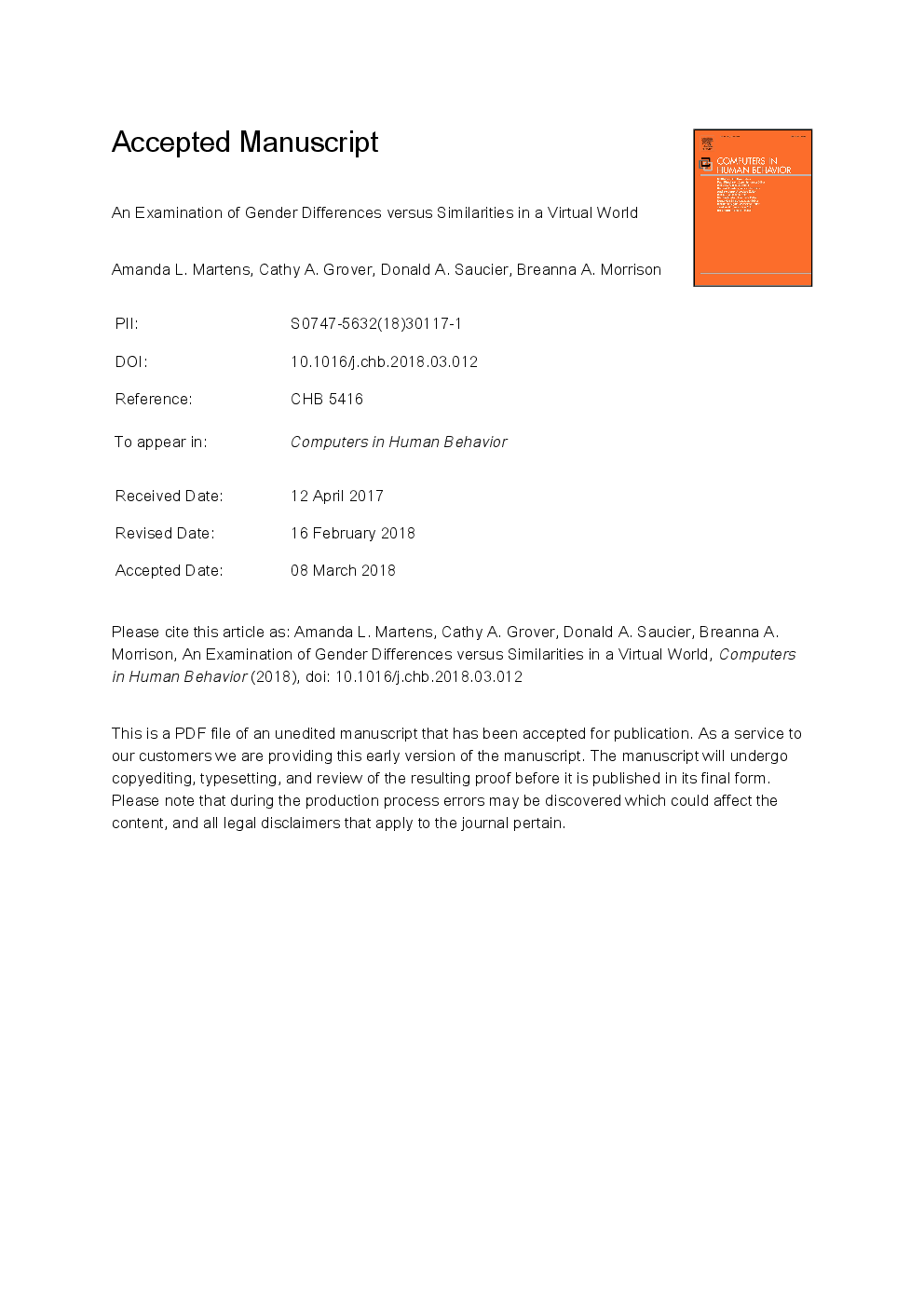ترجمه فارسی عنوان مقاله
بررسی تفاوت های جنسیتی و شباهت های آن در دنیای مجازی
عنوان انگلیسی
An examination of gender differences versus similarities in a virtual world
| کد مقاله | سال انتشار | تعداد صفحات مقاله انگلیسی |
|---|---|---|
| 150404 | 2018 | 26 صفحه PDF |
منبع

Publisher : Elsevier - Science Direct (الزویر - ساینس دایرکت)
Journal : Computers in Human Behavior, Volume 84, July 2018, Pages 404-409
ترجمه کلمات کلیدی
شباهت های جنسیتی، تفاوت های جنسیتی، واقعیت مجازی،
کلمات کلیدی انگلیسی
Gender similarities; Gender differences; Virtual reality;

